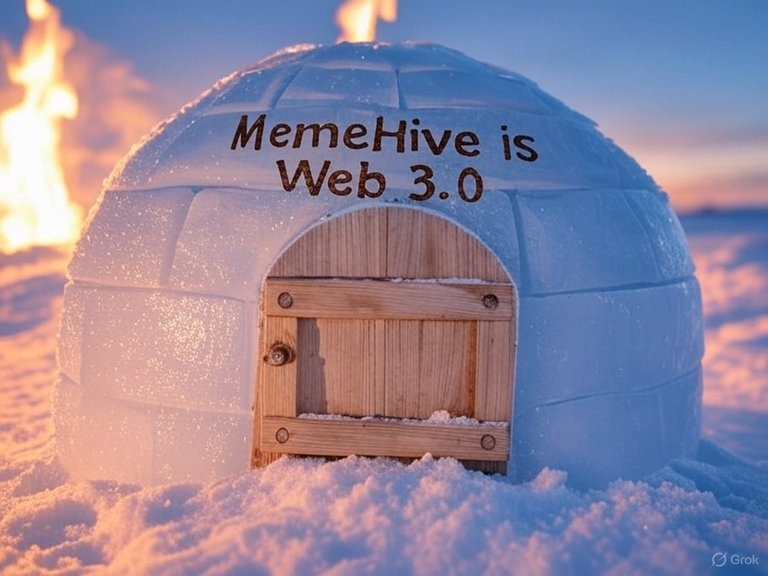
Image Source: Grok AI generated image
In an era where centralized power structures seem to tighten their grip on every aspect of our lives—be it through surveillance, censorship, or economic control—people are increasingly turning to decentralized solutions to reclaim their autonomy. One such innovative response is MemeHive, a community-driven platform built on the Hive Blockchain, where creativity, freedom of expression, and resistance converge in the form of memes. This blog explores how MemeHive exemplifies the power of decentralization and why it’s becoming a tool for battling state overreach.
The Problem with Centralized Control
Governments and corporations have long wielded centralized systems to shape narratives and suppress dissent. Social media platforms, once heralded as bastions of free speech, have morphed into heavily moderated echo chambers where algorithms and human censors decide what’s permissible. Whether it’s shadow-banning, deplatforming, or outright content removal, the average person’s ability to speak freely is under constant threat. Add to this the state’s growing appetite for surveillance and financial oversight—through mechanisms like central bank digital currencies (CBDCs)—and it’s clear why many feel the walls closing in.
Centralization, by its nature, concentrates power in the hands of a few. It’s a system ripe for abuse, where dissenters can be silenced with a keystroke and economic freedom can be curtailed by decree. But what if there were a way to bypass these gatekeepers entirely? Enter decentralization—and with it, platforms like MemeHive.
The Hive Blockchain: A Foundation for Freedom
At the heart of MemeHive lies the Hive Blockchain, a decentralized, community-owned network launched in 2020 as a fork of the Steem blockchain. Unlike traditional platforms that rely on corporate servers and top-down governance, Hive operates on a distributed ledger maintained by a global network of nodes. This means no single entity can shut it down, censor its content, or seize its assets. It’s a digital fortress built for resilience.
Hive’s structure also includes a native cryptocurrency (HIVE), which incentivizes participation and rewards creators directly—without intermediaries skimming profits or enforcing arbitrary rules. For those disillusioned with Big Tech’s stranglehold, Hive offers a breath of fresh air: a space where users, not CEOs or regulators, call the shots.
MemeHive: Weaponizing Humor Against the State
MemeHive takes this decentralized ethos and runs with it, creating a vibrant community where memes—those bite-sized packets of cultural rebellion—reign supreme. Memes have long been a tool for challenging authority, distilling complex ideas into sharp, shareable jabs that resonate widely. On MemeHive, they’re more than just entertainment; they’re a form of digital guerrilla warfare against state narratives.
What sets MemeHive apart is its resistance to censorship. Because it operates on Hive, there’s no central authority to delete posts or ban users. The community governs itself, relying on reputation systems and token-based voting to curate content. This doesn’t mean chaos—it means accountability flows from the grassroots, not a corporate boardroom or government office. If the state doesn’t like a meme calling out its hypocrisy, tough luck; it’s staying up.
Moreover, MemeHive’s use of blockchain ensures transparency and permanence. Every post, every vote, every transaction is recorded on an immutable ledger. This makes it a powerful archive of resistance—unlike posts on X or Facebook that can vanish at a moderator’s whim. For activists and truth-seekers, it’s a way to preserve their message against erasure.
Why It Matters: Decentralization as a Counterweight
The rise of platforms like MemeHive signals a broader shift: people are tired of being pawns in someone else’s game. Decentralized solutions offer a counterweight to state power by redistributing control. They empower individuals to speak, create, and transact without begging for permission. In a world where governments are pushing CBDCs to track every penny and tech giants are choking free discourse, tools like MemeHive are a lifeline.
Take the meme economy on MemeHive as an example. Users can earn HIVE tokens by creating content that resonates with the community—content that might be banned elsewhere for being too provocative or “misaligned” with official narratives. This not only incentivizes creativity but also builds a parallel economy outside the state’s reach. It’s a small but meaningful step toward financial and intellectual independence.
Challenges Ahead
Of course, MemeHive and the Hive Blockchain aren’t without hurdles. Scalability remains a concern for blockchain-based platforms, and onboarding new users to decentralized systems can be daunting—especially for those unfamiliar with crypto wallets or distributed networks. The state, too, isn’t likely to sit idly by as these tools gain traction; expect regulatory pushback or smear campaigns labeling them as havens for “extremists.” Yet, these challenges pale in comparison to the potential. MemeHive isn’t just a meme factory—it’s a proof of concept. It shows that decentralized communities can thrive, that humor can be a weapon, and that blockchain can safeguard what centralized systems seek to destroy.
Conclusion: The Future Is Decentralized
MemeHive on the Hive Blockchain is more than a quirky experiment; it’s a glimpse into a future where power is wrested from the state and returned to the people. By leveraging decentralization, it offers a blueprint for resisting control—not with guns or protests, but with code, creativity, and a damn good meme. As the battle for freedom intensifies, platforms like MemeHive remind us that the tools to fight back are already in our hands. All we need to do is use them.
